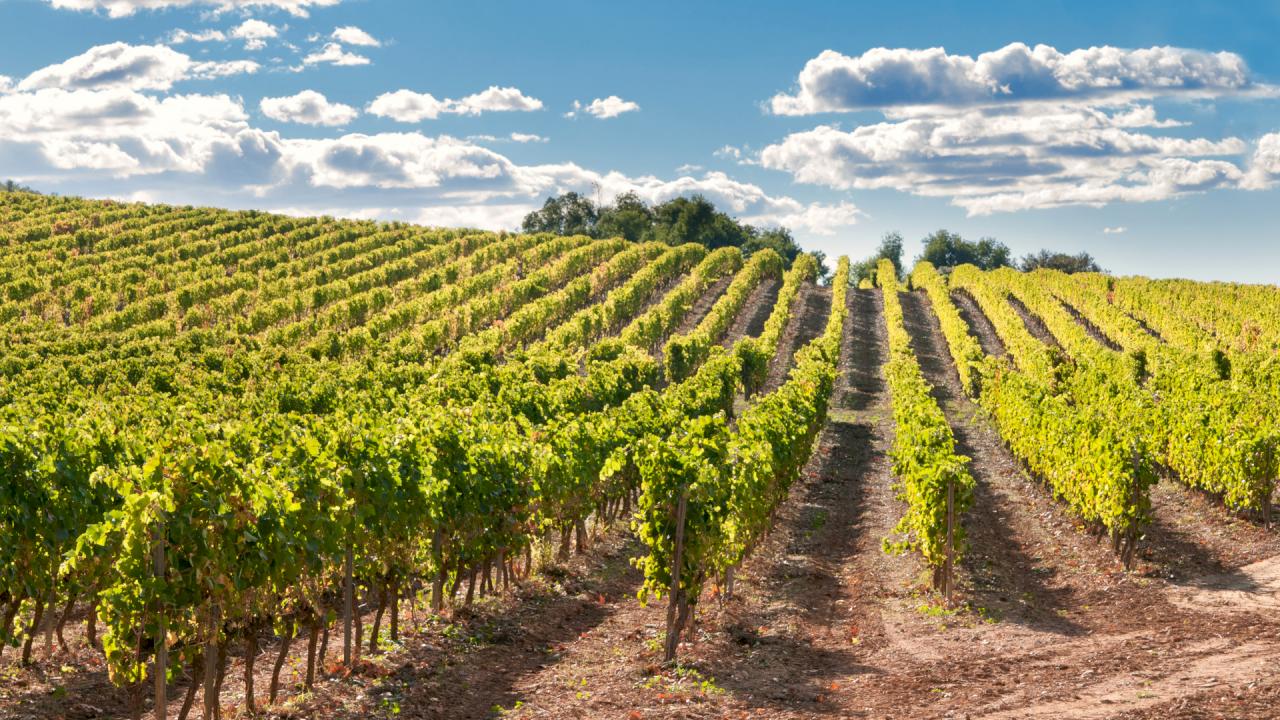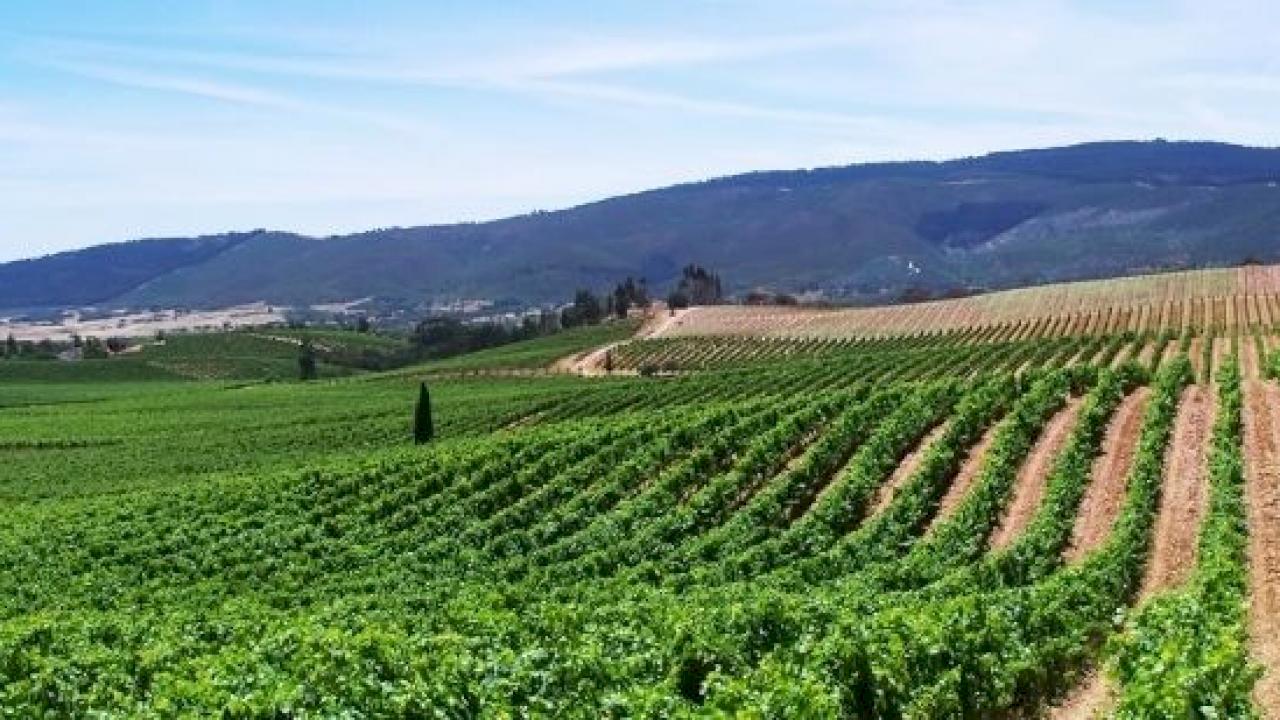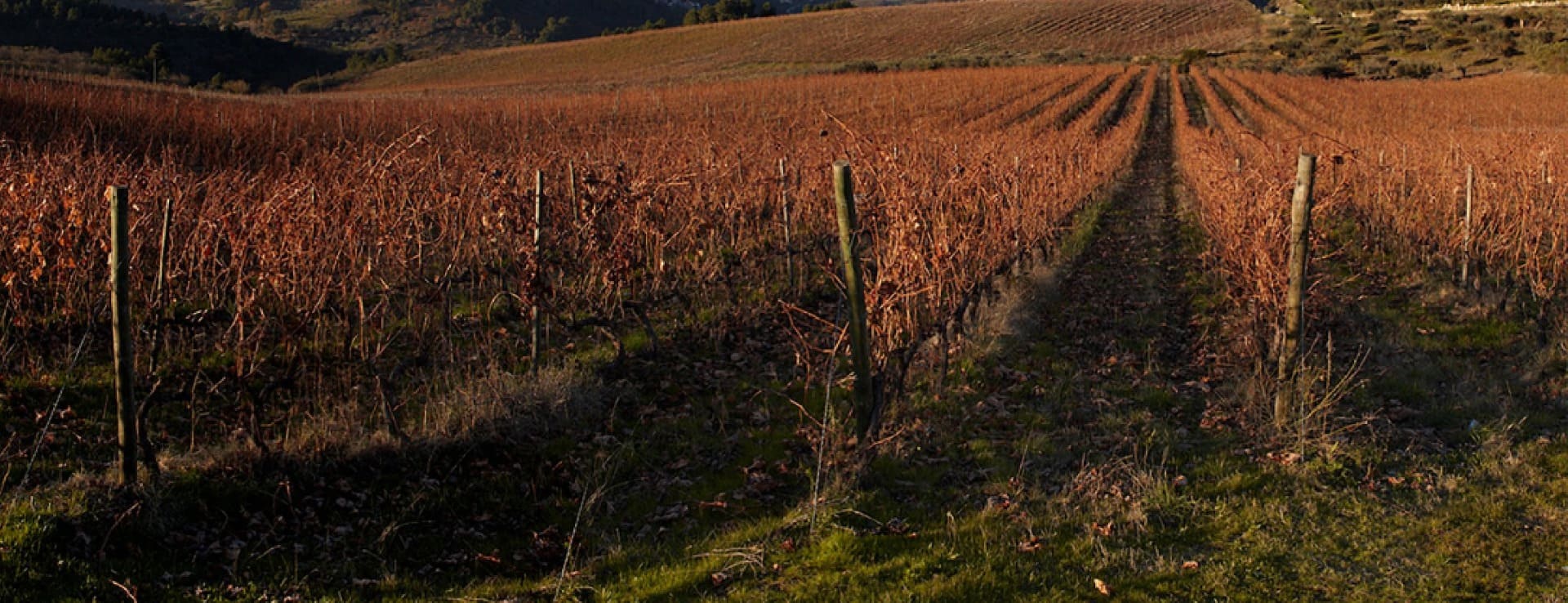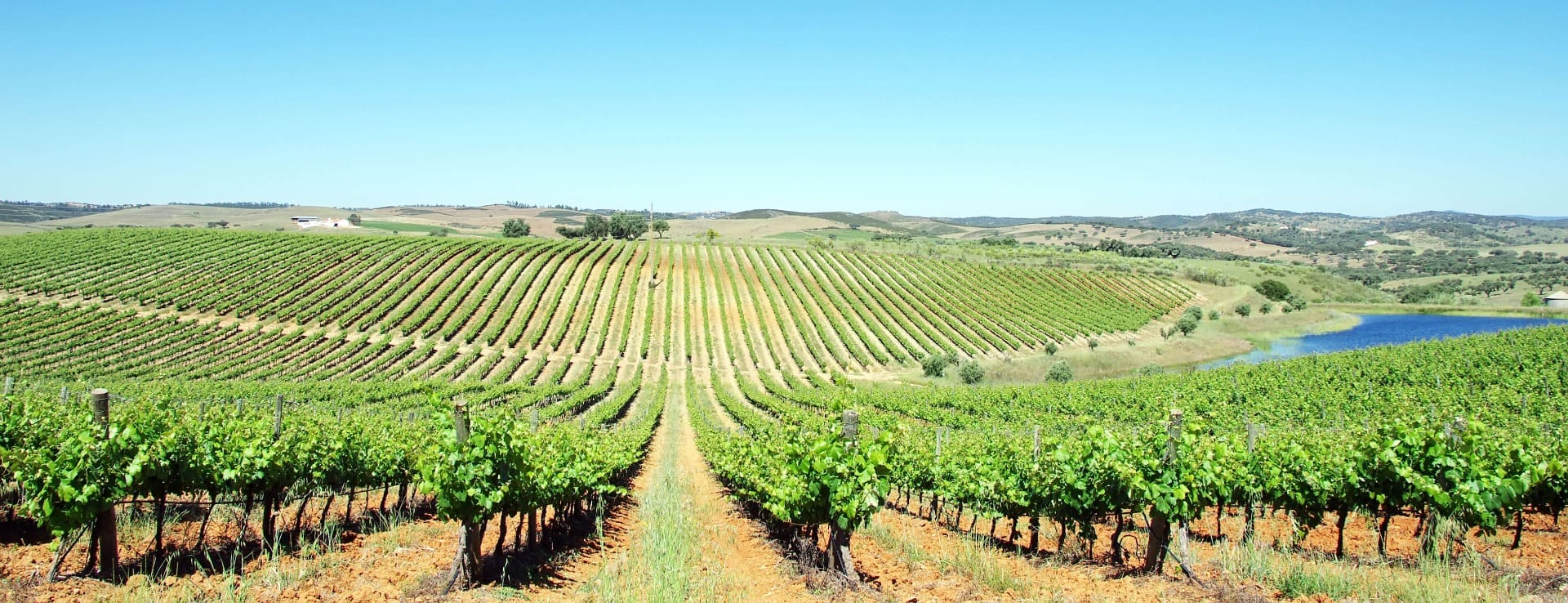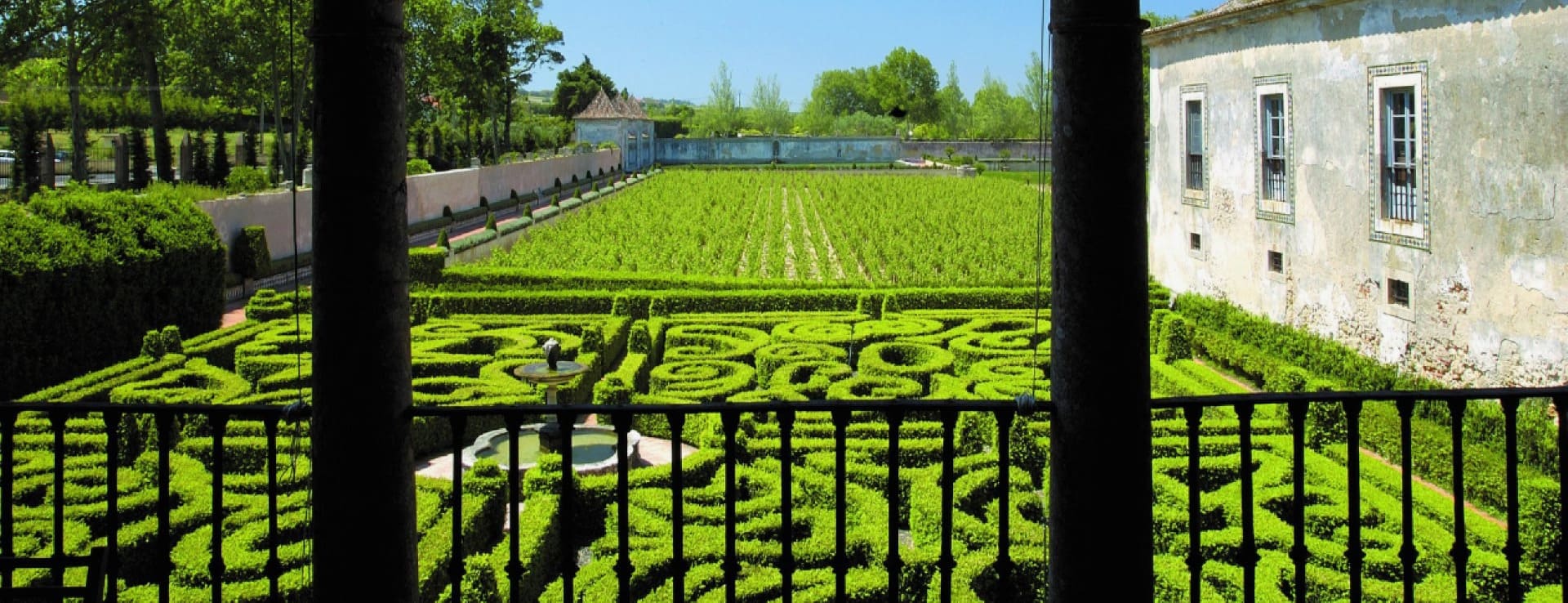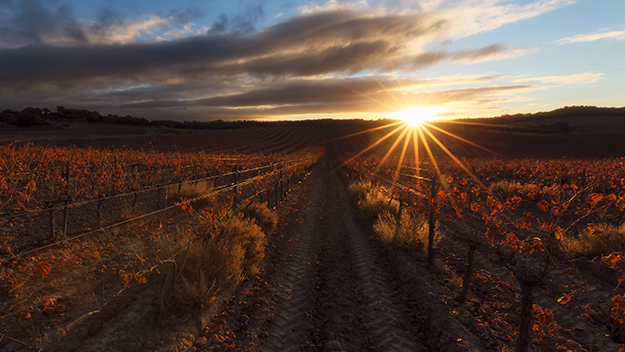Find your winery or vineyard
3 Wineries and Vineyards for sale in DOCs Lisboa
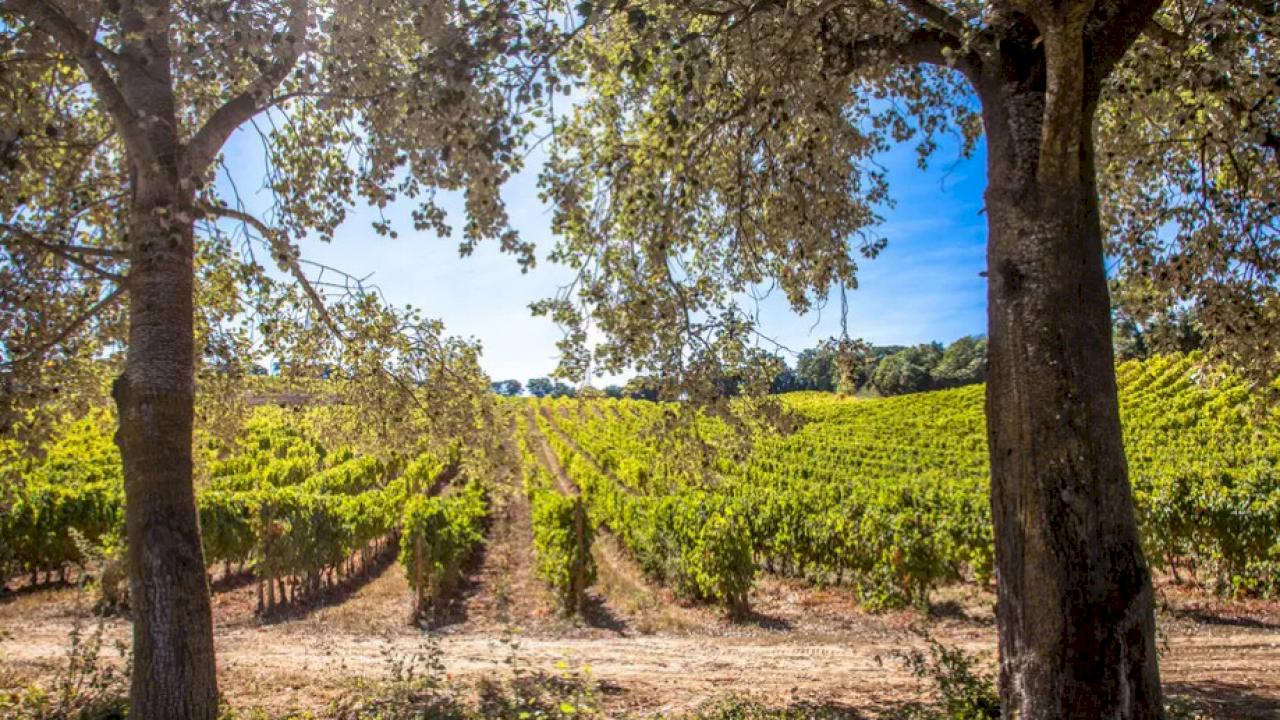
Spectacular farm with large buildings and 32 hectares of vineyard with French and Portuguese varieties.
DOCs Lisboa
Infographic of the Denomination of Origin

Change to imperial units (ft2, ac, °F)Change to international units (m2, h, °C)
Number of wineries (2017):
1.500
Total surface area:
2.000 ha4.942 ac
Maximum production allowed:
75.000 kg/ha66.911 lb/ac
Altitude of the vineyards:
Min: 50m
Max: 700m
Min: 164ft
Max: 2.297ft
Temperature:
Min: 8º
Max: 29º
Min: 46°F
Max: 84°F
Yearly rainfall:
1.100 l/m2102 l/ft2
DOC LISBON
LOCATION AND HISTORY
It is the largest wine-growing region in the country, encompassing all the municipalities of the coastal strip north of Lisbon, from the Tagus delta to Leiria in the north near the Mondego river, and to the east it borders the Ribatejana region. Formerly this region was called Oeste with the exception of the 3 DOC demarcated in 1908 Bucelas, Colares and Carcavelos which were considered independent. Afterwards, the region was renamed Estremadura, the name of the historical province, but in 2008 it changed its name back to the capital and also included the former DOCs of the area, and there are now 9 DOCs in this region.
SOILS AND CLIMATE
The relief of the region is not very pronounced, but establishes a clear separation from the Ribatejana region, which is made up of lower terrain, on the line where the Secondary is differentiated from the Tertiary and Quaternary by the mountain range of Montejunto and Ota.
The climate is temperate, the annual rainfall is between 600 and 700 mm and the Mediterranean influences are noticeable. The land in the region is almost entirely made up of secondary formations, with small outcrops of granite and basalt in the south. There are 30,000 hectares of vineyards in this region, but only 2,000 hectares are qualified for AOC.
SUBREGIONS AND GRAPE VARIETIES
In the Lisbon region there are 9 DOCs. Three of these DOCs have their own history and obtained the DO at the beginning of the 20th century, Bucelas, Carcavelos and Colares. The other regions are new Encostas d'Aire, Óbidos, Alcabaça, Alenquer, Torres Vedras, and Arruda. The DOC Lourinha is exclusive to eau-de-vie, one of the few eau-de-vie DOs in Europe.
DOC Torres Vedras when it started its journey and was called only Torres had to fight against the giant of the Penedés Miguel Torres and it was decided to add Vedras which is the name of the city. The vineyard is located from the Serra de Montejunto to the coast. 873 ha belong to the DOC.
DOC Alenquer is protected from the westerly winds by the limestone Serra de Montejunto, very different from the situation of Torres Vedras which is not far away but on the other side of the Serra. It is no surprise that some of Portugal's best producers are to be found around Alenquer. The area is not uniform, with rolling limestone hills to the west and an alluvial plain towards the Tagus River in the east where the wines have a character more akin to the Tejo than those of Lisbon. The traditional varieties of this area are Arinto, Fernao Pires, Jampal and Vital for whites and Castelao, Camarate, Trincadeira and Tinta Miuda for reds. But Alvarinho, Chardonnay, Viognier, Aragonez, Cabernet Sauvignon, Syrah and Touriga Nacional are also allowed. About 600 ha are qualified DOC.
DOC Arruda is located between Alenquer, Torres Vedras and Bucelas and the town is called Arrudas dos Vinhos because of its wine tradition. Here red wines predominate with the varieties Castelao, Camarate and Tinta Miuda.
DOC Óbidos, with its medieval walled town, is a major tourist centre. Gaeiras, Lourinha, Bombarral and Cadaval are the main wine centres. They mainly produce white wines which, due to their specific characteristics of low alcohol content and high acidity, make it possible to obtain quality wine spirits. Sparkling wines are also produced thanks to the cool Atlantic climate. The varieties of this area for whites are Vital, Arinto, Fernao Pires and Rabo de Ovelha and for reds Castelao, Bastardo, Tinta Miuda and Camarate. Other varieties such as Cabernet Sauvignon, Merlot and Pinot Noir are also allowed.
In the north of the region is the DOC Alcabaça, with a great wine-growing tradition since the 12th century, when the cultivation of vines was introduced in the region by the priests of the monastery of Alcabaça. This region includes the municipalities of Caldas da Rainha, Alcabaça, Nazaré, Óbidos and Porto do Mós. The location of the vineyards is situated on gently sloping hillsides that generally do not exceed 100 m in altitude, the geological nature of its soils made up of clays and the climate of the region together with the regional varieties, give rise to peculiar and differentiated wines. The white wines produced from the Rabo de Oveja, Vital, Arinto, Fernao Pires, Boal de Alicante and Malvasia varieties and the red wines from the Joao de Santarem, Trincadeira, Baga and Castelao varieties stand out.
Further north we can highlight the region of Leiria, where the cultivation of vines is located in the interior of the region, that is to say to the east of the great extension of pine trees that accompanies the coastal strip and that includes mainly the councils of Leiria and Batalha.
DOC Encostas de Aire is perhaps the least known, covering the limestone slopes of the Serra de Sicó and Serra de Aire to the east of Leira and Pombal, extending to the coast of Alcobaça, with 70 ha of vineyards. The traditional varieties are Arinto, Fernao Pires, Ratinho, Seara Nova, Tamarez and Vital and reds of Baga, Castelao and Trincadeira.
WINERIES
The main wineries of these 7 DOCs are Quinta do Carneiro in DOC Alenquer, Quinta de Chocapalha in Serra de Montejunto, Quinta da Cortezia, DFJ Vinhos (Dino Ventura, Gausto Ferraz and José Neiva), Casal Figueira, Adega Mae, Manzwine, Quinta do Monte d'Oiro (Bento do Santos planted Syrah with great success), Quinta de Pancas, Parras Wines, Quinta do Pinto, Companhia Agrícola do Sanguinhal (Pereira da Fonseca family), Quinta de Sant'Ana in the 17th century was owned by the Portuguese crown. XVII belonged to the Portuguese crown and in 1969 was sold to the Fürstenbergs, Casa Santos Lima, Vidigal Wines.
There was a time when DOC Colares, DOC Bucelas and DOC Carcavelos wines became fashionable in Britain when Wellington's soldiers returned from their heroic battles in Portugal.
The vineyard culture in the DOC Bucelas region was introduced in Roman times. The name Bucelas comes from the word Bucelario from bucelarius, mouthful or piece of food.
Bucelas is perhaps the DOC of the Lisbon region that has been most able to preserve its historical heritage. It has always been a white wine area, Arinto is a variety that has travelled far in Portugal, but in Bucelas it is by regulation at least 75% of the wine. Although Arinto has a high acidity, it is often blended with the tremendously acidic Esgana Cao and the more tamed Rabo de Ovelha. There are about 150 ha of Arinto planted in this small DOC.
The region was demarcated as DO in 1907 and extends along the Trancao and Ribeira de Bemposta river valleys, about 25 km north of Lisbon and includes the towns of Bucelas, Charneca, Vila de Rei, Bemposta, Catadouro, Vila Nova, Santo Aleixo, Chamboeira, Freixial, Pinteus and Fanhoes. A series of limestone hills at an altitude of about 350 m protect the vineyards from the Atlantic fogs that rise from the Tagus estuary. Bucelas wine has throughout history been transported to London, sometimes as fortified wine, sometimes as red wine, but in 1970 there was only one producer left in Bucelas, Cavas Velhas. It is a region that has managed to recover, in 2019 Sogrape bought Quinta da Romeira, which was Sir Wellington's headquarters in the region during the Peninsular Wars. It was during the French invasions that Bucelas wine acquired its fame and international renown, when it was offered by Wellington to George III, then Prince Regent. It was after the Peninsular War that the consumption of Bucelas wine became a habit in the crown of England.
The largest vineyards are located in the valleys, the soils belonging to the Cretaceous period of the Mesozoic era, made up of fine loamy soils. The region has its own microclimate, being quite cold in winter and temperate in summer, although with large temperature fluctuations at this time of year.
The wine of Bucelas is a dry white wine from the Arinto and Esgana Cao grape varieties. Other wineries in this area are Quinta do Avelar and Quinta da Murta.
DOC Carcavelos, there was a time when vineyards penetrated the territory of the city of Lisbon. Villages such as Camarate, Olivais, Sacavém, Frielas and Apelaçao were important wine centres in the 18th and 19th centuries, the progenitors of a fortified wine called "Lisbon" which briefly rivalled "Porto".
"Lisbon" which briefly rivalled "Port". Most of this land has been absorbed by Lisbon's Humberto Delgado Airport. There still remains a recently restored 17th century Quinta which makes a red wine called Corvos de Lisboa (after the ravens on the city's coat of arms), made at this Quinta by Casa Santos Lima.
This wine was so highly prized that it was sent as a gift from King D. José in 1752 to the court in Peking. It was also highly appreciated by the soldiers of the Duke of Wellington during his campaigns in the Iberian Peninsula.
Known in the 18th century as "Calcavella" it was a fortified wine that appeared alongside "Lisbon" wine at Christie's early auctions. The two wines were probably similar. This deception was tacitly supported by the Marquis of Pombal, who owned an important Quinta in Oeiras. Although he passed laws to protect Port, he insisted on blending Carcavelos with Port to give the wine more strength.
The DOC came in 1908 and includes the villages of Oeiras, Sao Domingos de Rana, part of Estoril and Carcavelos. The old Quintas with bucolic names such as Quinta de Bela Vista, Quinta das Rosas, Quinta do Lameiro and Quinta de Santa Rita have been transformed into houses with the expansion of Lisbon along the Tagus. There is an area called Bairro Alem das Vinhas although there are no more vineyards there. This would have been the end of Carcavelos but the local Camara de Oeiras in 1997 intervened and decided to restore the house of the Marques de Pombal, Quinta de Marques and produce wines again under the brand Villa Oeiras. This fortified wine is aged between 7 and 15 years in Portuguese oak barrels.
The soils that make up the region are of different types, predominantly Belasian and Turonian which are calcareous in nature with masses of gabbro, basalt.
In Carcavelos it is possible to make red and white: Castelao and Preto Marinho together with Boal Ratinho, Arinto and Galego Dourado are the varieties. Galego Douro is the most relevant and nowadays it is also planted in Alentejo. The chalky soil and the maritime conditions help the acidity. In the past the wines were fermented dry and then fortified with grape pomace up to 17.5%. This is a generous wine with an alcoholic strength between 18 and 20 degrees and a residual sugar content of about 15 gr/litre. It seems that there were no vintages or "colheita" until the reinvention of this wine in 2005.
DOC Colares was one of the most important wine-growing regions in the country, but today it is difficult to find vineyards in Colares, a village among the best land on the cusp of the dunes between Paraia das Maças and Magoito. There are also some vineyards on the slopes of the Serra de Sintra in Almoçageme, near Cabo de Roca and in Encosta de Monserrate. If in 1938 there were 1,800 hectares, of which 1,600 were cultivated in sand, in the 80's Colares had 1,800 hectares of vineyards and today there are only 20 in "areia" and 60 in clay.
It is known that there were already vineyards in this area in the 12th century when Afonso Henriques proclaimed himself the first king of Portugal and in 1154, shortly after his troops recovered Lisbon from the Moors, his name was immediately linked to the Crown's assets. The fame of the wines of Colares goes back several centuries, as already when D. Afonso III, in 1255, gave the town its charter and made the donation of the royal estate of Colares to Pedro Miguel, reference is made to the planting of vines. In the harvest book (Livro das Colheitas) of D. Afonso IV, the colheitas of Sintra and the suburbs are highlighted.
Viticulture, together with other cultures, gave so much importance to the region of Colares that it led King Joao I in August 1385, after the Battle of Aljubarrota, to donate it to the Constable D. Nuno Alvares Pereira, being one of the most heroic pages of the history of the region of Colares. Since the 13th century, the famous Colares wine has been a noble wine, which was frequently brought to the king's table.
In 1880 and 1890 the red wines of Collares, as they were called, were compared with the Medoc. Although the region was demarcated as AOC in 1908, the abuses continued. The region suffered with the collapse of the Brazilian market in 1930, when Governor Getulio Vargas decreed an embargo on wine imports. In the same year the Estado Novo came in and prohibited the blending of wines called chao de areia (sandy soil) with chao rijo (clay soil) and the following year the cooperative was established. From 1930 until the 1990s all the grapes from Colares had to be delivered to the cooperative which contributed to the drop in the quality of the wines. Tavares & Rodrigues with the support of Domecq planted 12 ha of vines on the sandy soils near Azenhas do Mar, their work was recovered by Fundaçao Oriente.
The soil is composed of fine sand from 1 to 7 m and underneath is clay, once the roots were established and the bamboo parapets protected them, the vines would develop through the sand like spiders, looking as if there were 6 different vines all from the same plant. The reed (local bamboo) palisades placed parallel or perpendicular to the coastline provided protection from the westerly winds. The legacy of this way of protecting the vineyard from the west Atlantic winds can be found between the villages of Fontanelas, Magoito and the sea. On the sand at an altitude of 50 m there are some plots in the same way as they were protected for centuries. The Ramisco variety, still unique to Colares and which managed to survive phylloxera thanks to the sandy soils of the area. When the bunches begin to ripen, they are supported with small cane stakes to prevent the grapes from being burnt by the heat radiating from the sand. The wind is moderated with the help of reeds.
The ramisco, the sand and the wind are the three natural elements that define this wine.
As for the geological nature of the sandy soils where the vines are grown, they are almost exclusively made up of sands from the Mesozoic and Cenozoic eras and belong to the Cretaceous or Jurassic or Oligocene and Miocene-Maritime periods and in some cases to the basaltic layer in whose variable constitution clay plays an important role. The clay soils have been given the name 'Chao Rijo' as opposed to the sandy soils designated 'Chao de Areia'.
Three types of wine are allowed in Colares, two types of red and one white. The most expensive wines come from the Chao de Areia where the Ramisco grape must represent at least 80% of the blend. Other varieties such as Castelao, Parreira Matias and Tinta Miuda can contribute to the wine. The second type of red wine comes from the chao rijo of the limestone soils far from the coast, they are more robust wines of varieties other than Ramisco. The white wines are from the Malvasia de Colares grape, Adega Regional and Casal Santa Maria make very fresh and citric Malvasia wines.
WINERIES
Adega Regional still makes most of the wine from Colares. The historical companies associated with Colares have closed down: D. J. Silva, Tavares & Rodrigues and Visconde de Salreu but you can still find old vintages from these houses. One of the mythical names of Colares, Viúva (Widow) Gomes closed in 1970.
Other wineries in the area are Adegas Beira Mar (Chitas family) in Magaioto, Casal Santa Maria bought by Baron Bodo von Bruemmer in 1962 and the Fundaçao Oriente, a charitable organisation founded from a lucrative gambling licence in the former Portuguese colony of Macau. The Foundation recovered a property in Colares that was founded in the late 1980s by the house of Tavares & Rodrigues and saved Colares from extinction.
Discover more wineries and vineyards for sale in these wine regions in Portugal
Subscribe to our mailing list to receive news about wineries and vineyards.



